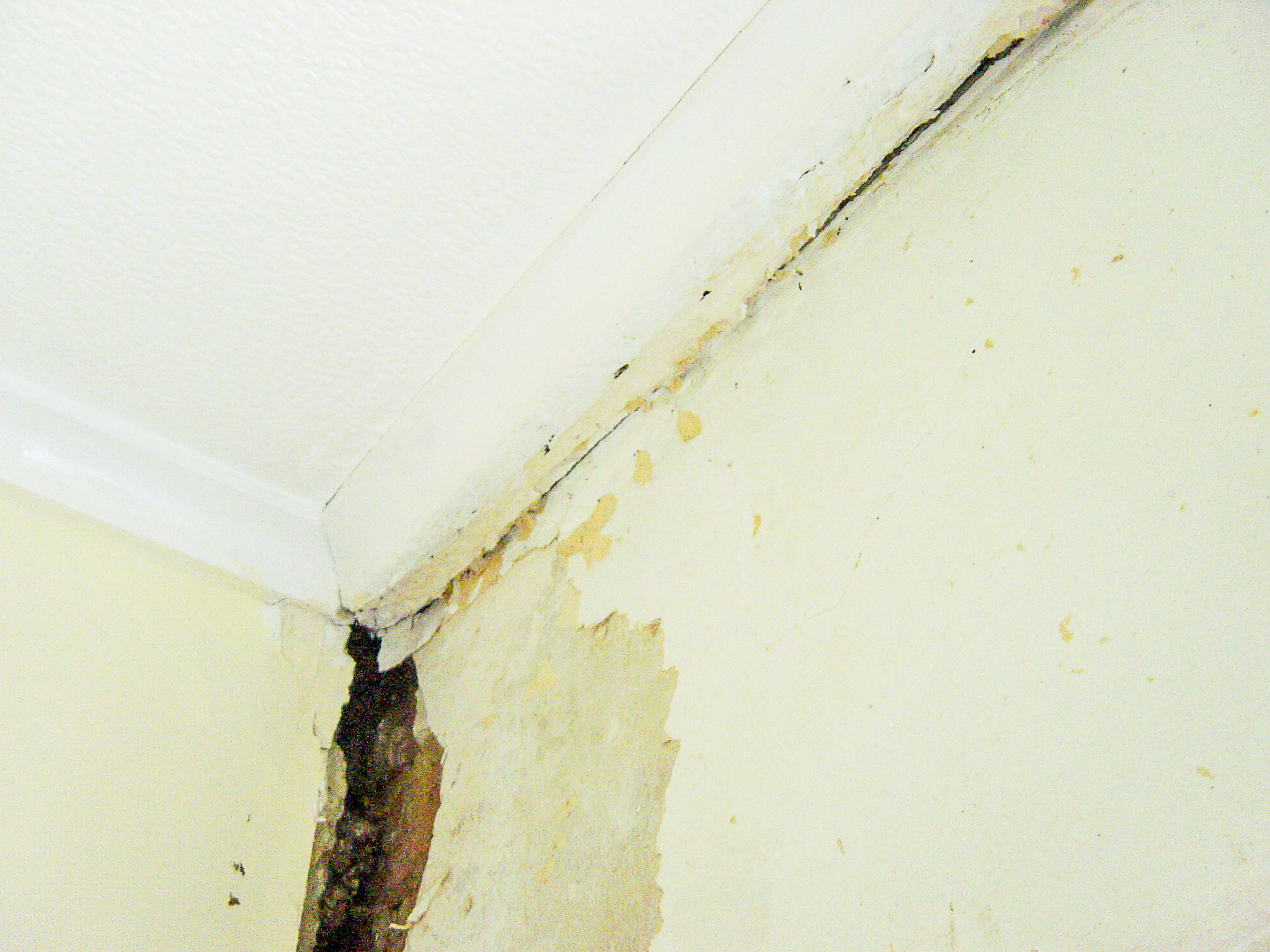Damp
It is normal for a Building Surveyor to employ a damp-meter at random locations to check for any damp to the internal walls. The cause of any damp is usually fairly obvious, although not always so. Typically, when a Surveyor requests a Damp Report, it is to confirm that the cause is rising damp, to determine the extent of the problem, and to get an estimate for remedying it.

The most common type of damp is rising damp. Moisture from the ground rises, by capillary action, up the walls. The moisture often carries salts which are deposited on the face of the wall when the moisture evaporates. Internal decorations are stained and damaged, plaster can debond and become loose. Rising damp only extends up to 1 metre above ground level, the capillary forces cannot lift the moisture any higher. Normally walls are protected against rising damp by a damp proof course built into the wall. Very old properties did not have damp proof courses, and old properties may have damp proof courses which have become ineffective. Sometimes the outside ground levels are raised above the damp proof course, this is called 'bridging'.
The solution to rising damp is usually to inject a chemical damp proof course, and to re-plaster the internal walls with a waterproof layer up to 1.2 metres high. This work usually comes with a 10, 20 or even 30 year guarantee.
Ground floor slabs are equally likely to be affected by rising damp. It is only modern properties which have proper damp proof membranes beneath the floor slabs. Older properties often relied on tile finishes to control damp. If there is a damp problem with a ground floor it is either controlled with an impermeable covering such as vinyl sheet flooring, or the slab must be replaced with a new one incorporating a damp proof membrane.
Penetrating damp is caused by moisture which penetrates through the roof or walls. Roof problems are usually evident. Damp penetrating through walls, which includes flashings at roof and chimney abutments, is usually quite evident, but it is usually very difficult to pinpoint and cure the precise cause of the problem and very often there is no quick or easy solution. Penetrating damp can sometimes be caused by gutter or roof problems which allow rainwater to spill onto and saturate areas of wall.
Condensation is the third type of damp. This is usually caused by the lifestyle of the occupants, rather than a defect with the property. Lack of ventilation and a tendency to use the radiators for drying clothes are common causes.
A typical Damp Report will identify those (readily accessible) areas where damp is present and will identify the cause, along with recommendations for any necessary repairs or remedial works.
So that we can provide you with an estimate of the cost of a Damp Report, please fill in the following form giving us as much information as possible. If you also require a Timber Report we can offer a combined Damp and Timber Report. Please fill in the following form.
